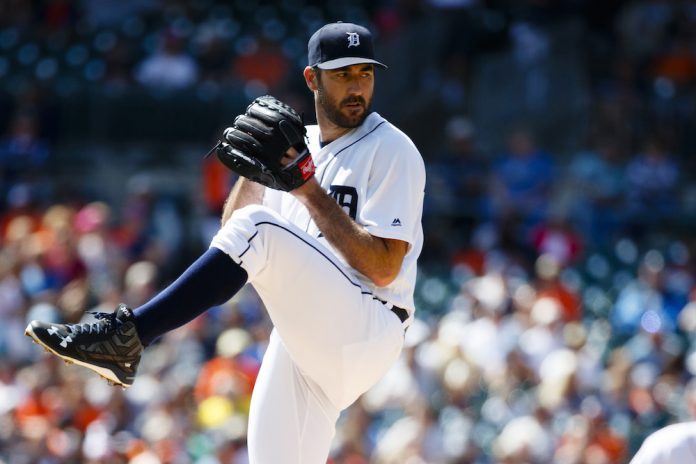
UPDATE (08.04.17): Justin Verlander has reportedly cleared waivers and is now eligible to be traded anywhere freely.
Tigers right-hander Justin Verlander has cleared revocable trade waivers, I'm told.
— anthony fenech (@anthonyfenech) August 4, 2017
It was tough to imagine Verlander getting claimed by any of the 29 other clubs, given his financial obligations over the next two seasons. Though this does open the door for him to be traded anywhere, any proposed deal would require his approval, given his 10-and-5 rights.
Tigers general manager Al Avila recently advised anyone thinking the team needs to trade Verlander to not get their hopes up, saying that any such move would gain better traction in the offseason when teams are readjusting their roster and payroll situations.
The MLB non-waiver trade deadline has come and gone and Detroit Tigers starting pitcher Justin Verlander did not get shipped out of the Motor City. It seems that trade talks never really got serious, to the point where he was almost out the door.
It means that the 34-year-old Verlander is staying put, at least for now. But for how much longer? Sources are saying that the Tigers placed the 6-time All-Star on waivers.
The #Tigers placed Justin Verlander on revocable waivers today, source says. Name came up at the deadline, but he stayed put in Detroit.
— Jerry Crasnick (@jcrasnick) August 2, 2017
As is the case in baseball, trades can take place beyond July 31, there are just some extra hurdles to overcome. The waiver wire becomes the focal point for any late-season transactions in getting playoff rosters finalized.
Jerry Crasnick offers some additional clarity into the mindset and any potential risk or reward some teams may make in claiming Verlander.
Verlander has 10-5 rights, so he can veto any trade. Big contract also makes claiming him a risk. Guaranteed $56M in 2018-2019.
— Jerry Crasnick (@jcrasnick) August 2, 2017
You can say no to the claim if you're a 10-5 guy or have a full no trade clause. https://t.co/A4fwy1M4Eo
— Jerry Crasnick (@jcrasnick) August 2, 2017
Here is how the waiver wire works:
- Once a player is placed on waivers, teams are notified and can put in a claim for said player. Preference goes to the team with the weakest record in that player’s respective league; in this case, it would be the Chicago White Sox.
- If no team in the player’s league claims him, the preference goes to the other league, again beginning with the club with the worst record (NL – Philadelphia Phillies).
- If a team claims Verlander, the Tigers then have three options: a) iron out a trade with the claiming club within two business days, b) pull Verlander back and cancel the waiver or c) simply allow the claiming team to take Verlander (and his salary) for nothing.
- NOTE: If the Tigers were to revoke to waiver, they lose the option to do that again if they were to place Verlander again on waivers. Teams are only allowed that option once.
- If Verlander or any other player from here on out is placed on waivers and no other clubs claim him after three business days, then that player will be “cleared” and the Tigers will then be able to trade him to whoever they wanted (or option him to the minors, or outright release him, God forbid they fathom doing either of those).
Players are placed on waivers in the month of August constantly every season. News of players being put on the wire is fairly common. Rarely do you hear which team(s) specifically put in claims on said players, but more so if and when they have been traded or cleared.

In the case of Verlander, this comes just a little over 48 hours of the non-waiver trade deadline. It now becomes a bit of a “cat and mouse” game of sorts between general manager Al Avila and his other 29 counterparts.
The red flags for acquiring Verlander has been well-documented. In addition to the substantial money owed to him over the next two years as well as his full no-trade clause, the overall numbers have not been stellar (6-7, 4.29 ERA, 1.44 WHIP). But he’s been terrific over his last five starts, registering a 2.25 ERA in that stretch.
It will be very interesting to see what teams if any, put in a claim for Verlander. A number of the teams that had originally been linked to the veteran in recent weeks — Cubs and Dodgers, specifically — have already addressed any issues they may have had in their starting rotation, as have the New York Yankees with their acquisition of Sonny Gray.
One team that has been brought up a lot is the team Verlander last faced on Sunday, the Houston Astros. Many around the industry believe the Astros did not do enough to bolster a rotation that is injury-prone and/or not very battle-tested for a postseason run.
